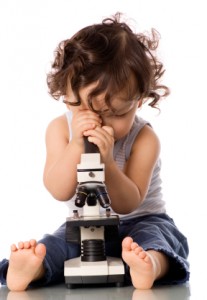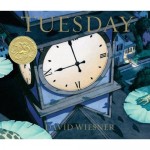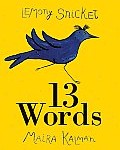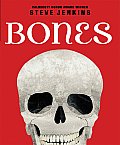 As the parent of a three-year-old, I spend a lot of time reading kids’ books. Some are wonderful, a lot are so-so, and a few are so frigging annoying that — I confess — I hide them. I always expect to like science-themed books — this is my kind of brainwashing, I think — but lately, I’ve even packed a few of them off to the thrift store.
As the parent of a three-year-old, I spend a lot of time reading kids’ books. Some are wonderful, a lot are so-so, and a few are so frigging annoying that — I confess — I hide them. I always expect to like science-themed books — this is my kind of brainwashing, I think — but lately, I’ve even packed a few of them off to the thrift store.
In uncharitable moments, I might gripe about these books’ bad artwork or mixed meters. But my real problem is with the way they present science. According to them, science is not, as we LWONers humbly remind you, The Last Word on Nothing. It’s an intimidating institution filled with intimidating grownups, all of whom have The Last Word on Pretty Much Everything. “Putting a dinosaur skeleton together takes hard work — and lots of special knowledge and skill,” one book intones.
I was well into an undergraduate biology major before I grasped that science is not a pile of interesting facts but a process — not the only way to learn about the world, but a very powerful one. I’d like my daughter to arrive at that realization a little sooner than I did. I’d also like her to know that she doesn’t need a Ph.D. to start thinking like a scientist. Yes, in the official world of science, credentials do count, and in most cases they should. But kids should know that anyone can make observations, form hypotheses, and figure out how to test them. Anyone can have a eureka moment. Anyone can go on a voyage of discovery, even if it begins and ends in the town park.
I’ve started to think that the best books for budding scientists don’t lecture, teach, or even talk much about science — instead, they find other ways to celebrate the crooked, fascinating path that is the scientific life. Below are a half-dozen that get unanimous approval in my household.
 Tuesday by David Weisner. Late one Tuesday evening, a mob of frogs flies through town on lilypads, disappearing as quickly as it came. Why? This almost-wordless story doesn’t say, leaving kids free to form their own theories about spontaneous frog flight.
Tuesday by David Weisner. Late one Tuesday evening, a mob of frogs flies through town on lilypads, disappearing as quickly as it came. Why? This almost-wordless story doesn’t say, leaving kids free to form their own theories about spontaneous frog flight.
Owl Moon by Jane Yolen. A classic story about a backyard adventure, in which a young girl goes owling with her father. The great horned owl they finally see, unlike most animals in kids’ books, isn’t particularly friendly — it occupies a world apart. “For one minute, three minutes, maybe even a hundred minutes, we stared at one another,” the girl writes. One of the best introductions I know of to the mysteries of nature. 
Thirteen Words by Maira Kalman and Lemony Snicket. Not your usual word-power book: The thirteen words include not only “dog” and “bird,” but also “despondent” and “haberdashery,” and they’re eventually strung together to form a story and a song. Perfect practice in discovering the sense in seemingly nonsensical data (and besides, it’s fun to hear your toddler say “panache”).
Miss Rumphius by Barbara Cooney. Though this book puts me on a mild invasive-species alert (a concern shared by my friend and fellow journalist Virginia Gewin), this is a lovely story of an adventurous life well lived. I especially like Miss Rumphius because — almost uniquely among female characters in kids’ books — she’s unmarried, has no children, and seems perfectly satisfied. Small investigators, particularly girls, should know that life comes with all kinds of options. 
Bones: Skeletons and How they Work by Steve Jenkins. The text of Bones is a bit advanced for my daughter, but the illustrations are so good that she likes to look at it anyway. She loves comparing the bones in her own hand to those in a bat’s wing, and hearing that her ancestors had not just tailbones but tails. Bones is also great for inspiring hands-on research (dominant methods are pinching and tickling).
Far From Shore: Chronicles of an Open Ocean Voyage by Sophie Webb. Again, the text of this book is too complicated for my daughter, but she loves to look at the illustrations, which were painted by the author during a four-month-long Pacific research voyage. Webb describes her work in some depth, but she emphasizes not the results but the experience: the starlit nights on deck, the sightings of dolphins and whales and seabirds, and daily life with her fellow scientists. (She also includes details of high kid interest: “Since our toilets are flushed with seawater, if I flush the toilet in the dark it too will glitter with bioluminescent plankton.”)
Now, I’m looking forward to your reading recommendations for LWONers-in-training. After all, my daughter is going to get suspicious about all those gaps on her bookshelf.
Top photo credit: iStockphoto.
I recommend anything by the award-winning author Sally Walker. http://www.sallymwalker.com/
Smithsonian magazine runs a list online every December of good children’s books. I pull out the kid’s science books from the pile we get from the publishers and then review them on Surprising Science. Here’s the lists from the last two years:
http://blogs.smithsonianmag.com/science/2009/12/science-books-for-kids/
http://blogs.smithsonianmag.com/science/2010/12/great-science-books-for-the-little-ones/
THANK YOU for this, Michelle! I, too, get really frustrated flipping through the kid’s section and thinking there must be something better than this random drivel.
A favourite of ours is The Snail and the Whale, just beautifully written. (http://www.amazon.co.uk/Snail-Whale-Julia-Donaldson/dp/0333982231)
We all know that David Weisner is the shizzy, and Flotsam is as good as, if not better than, Tuesday. http://www.powells.com/biblio/1-9780618194575-15
Also, my two-year-old daughter LOVES this series of books, regardless of how boring they are. http://www.amazon.com/EyeLike-Nature-Snow-PlayBac/dp/1602141029/ref=sr_1_5?s=books&ie=UTF8&qid=1311869810&sr=1-5 At least it’s a start!
Very interesting collection of books. Neat !
Some books might be great READS for adults to young children. Here is one of my own, an eBook that has some vivid pictures and rich explorations of nature by kids and adults both.
BOOK ANNOUNCEMENT
Go to Amazon.com to read Children, Pelicans, and Planets: Bobcat Magic, by Keith Nelson.
Surprise, delight, and amazement may await you. Readers also may feel itches toward actions that increase their contacts with nature and the quality of their children’s participation with nature. Among the likely impacts of Children, Pelicans, and Planets: Bobcat Magic on readers and in turn on their friends and children are these–
• Setting aside more time to enter nature
• Heightened attention to details in many contexts
• New awareness of the potential for the seemingly familiar to surprise, reorient, and touch us
• Feeling how nurturing the planet resonates with nurturing our children
You may read this book on a Kindle or any computer or iPad where you have previously downloaded the free Kindle App from the Amazon.com website. On Amazon search by the title within the Kindle books section. (Nature especially). The book has many pictures and the Color Edition delivers these for Ipad and Computers in full rich color.
I loved Owl Moon and wish my kids were young enough to have put 13 Words into high rotation. Science is not that different from art, which is far more a process than a product.
I love finding good children’s science books. I reviewed a few in this video here:
http://www.youtube.com/watch?v=nZSsA6MmCJQ
Daniel Loxton did a bang up job with Evolution and Marcus Chown wrote a lovely childrens novel about wormholes called Felicity Frobisher and the Two Headed Alderberan Dust Devil
Kate Jackson, a herpetologist, wrote a beautifully illustrated book called Katie of the Sonoran.
Thanks for the post!
Thanks for these great recommendations – and Andrea, I love your point about the similarities between art and science. I agree, getting kids excited about the journey (and oblivious to the “two cultures”) is a good approach no matter the discipline.
And what about science mags for kids? Two Canadian publications leap to mind (because I edit one, when not on sabbatical): http://www.knowmag.ca and http://www.yesmag.ca
We totally agree with explaining the process, of course, it’s not easy explaining it in 250 words but we try;-)